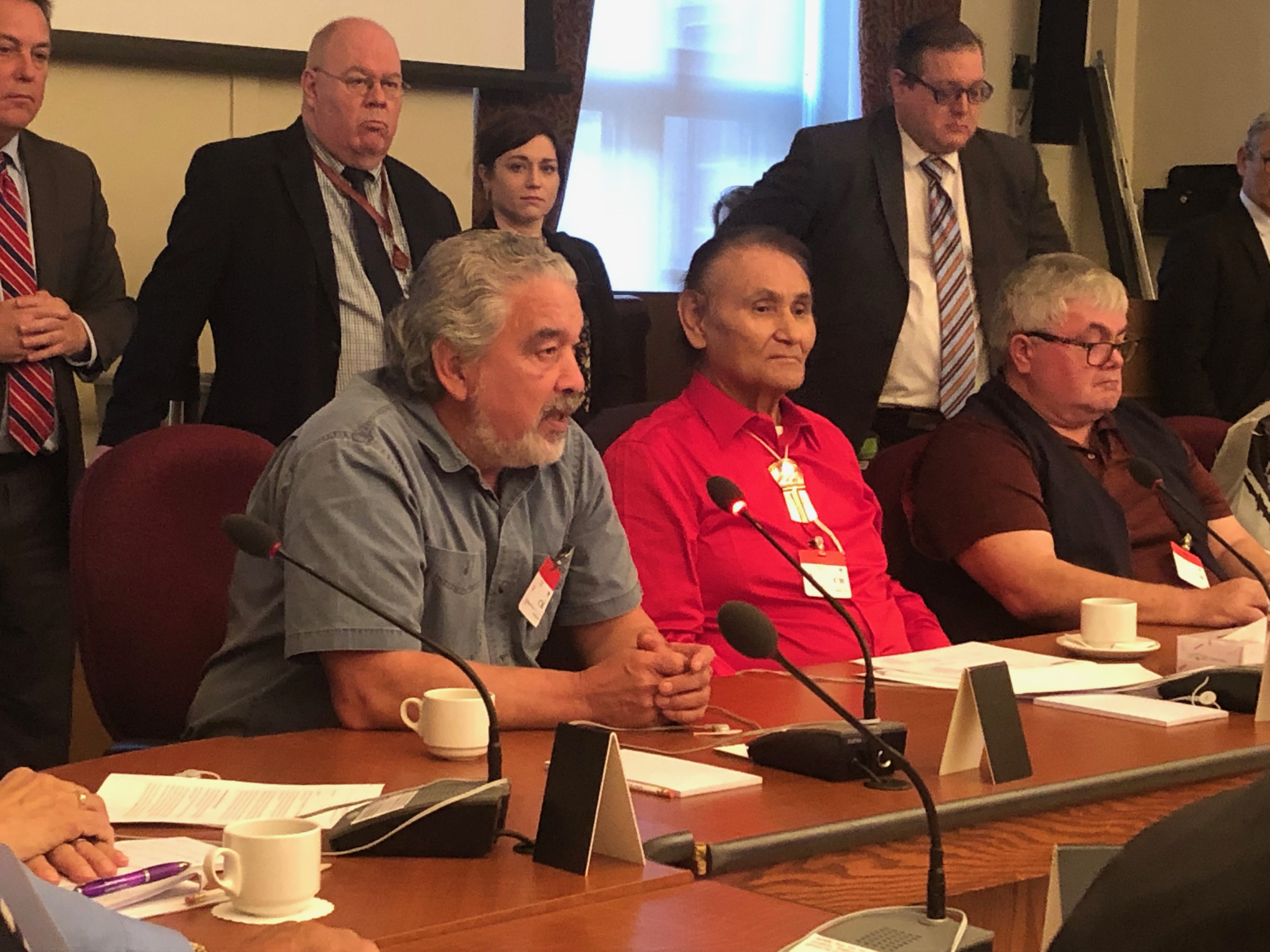Made-in-Alberta’ plan will apply to industry; federal carbon tax — and rebates — will apply to consumers

Prime Minister Justin Trudeau’s federal government has accepted a carbon-pricing plan for large-emitting industries developed by the government of Alberta Premier Jason Kenney. (Justin Tang/The Canadian Press, Kyle Bakx/CBC, Amber Bracken/The Canadian Press)
The federal government will accept the Alberta government’s latest plan to tax the greenhouse gas emissions of large industrial facilities at a rate of $30 per tonne in 2020.
Federal Environment Minister Jonathan Wilkinson said Friday his department agrees that Alberta’s system will meet federal requirements for large emitters like oilsands operations, natural gas producers, chemical manufacturers and fertilizer plants.
All told, the province estimates these types of heavy-emitting facilities account for 55 to 60 per cent of Alberta’s greenhouse gas emissions.
This system runs in parallel to the federal fuel charge — commonly known as the carbon tax — that applies to individual consumers and smaller-emitting companies.
Alberta already has a carbon-pricing system that charges large emitters at a rate of $30 per tonne. It was brought in by the previous NDP government. The new United Conservative Party government plans to modify that system, however, starting on Jan. 1.
While the carbon price will remain at $30 per tonne, that price only effectively applies to emissions above a target level.
Change in emissions targets
The new plan, known as the Technology Innovation and Emissions Reduction (TIER) regulation, will make it easier for some of the most carbon-intensive facilities to hit their emissions targets, thereby avoiding the tax and potentially earning credits for coming in below target.
That’s because the current targets are set at an industry-wide level — meaning all oilsands facilities, for example, are held to the same emissions standard — while TIER will create individual targets for each facility based on its emissions levels from the recent past.
The province estimates that switching to the new system will save industry more than $330 million in avoided compliance costs in 2020.
The change in targets will apply to all industrial categories except electricity generation.
Alberta Environment Minister Jason Nixon said Friday he was pleased by Ottawa’s decision to accept the “made-in-Alberta” carbon-pricing system.
“When we engaged with industry on TIER in summer 2019, we heard loud and clear that they want to be regulated by the province, not by Ottawa,” Nixon said in a release.
The Canadian Association of Petroleum Producers (CAPP) issued a statement that also praised the “made-in-Alberta” plan.
“This program has the components to ensure both Alberta’s large and small oil and natural gas operations remain competitive, while clearly satisfying the requirements set by the federal government,” said Terry Abel, CAPP’s executive vice-president of operations and climate.
Alberta will ‘oppose’ $40 price in 2021
Current federal rules will require the price on carbon to rise to $40 per tonne in 2021 and $50 per tonne in 2022.
Premier Jason Kenney said Friday his government would “oppose that measure” but won’t necessarily flout it.
“We’ll have to make a prudent judgment when we get closer to that date,” Kenney told reporters. “Because one thing we don’t want is the federal government bigfooting into Alberta and enforcing their own, separate regulatory regime.”
The federal government plans to impose its carbon tax on the consumer-level sale of fossil fuels starting in 2020.
Carbon tax — and rebates — coming Jan. 1
Under its previous NDP goverment, Alberta had a consumer-level carbon tax that met federal requirements, but Kenney’s UCP government killed that carbon tax as one of its first acts after being elected in April.
The federal “backstop” on carbon pricing, however, means Ottawa’s carbon tax will apply to the purchase of fuels like gasoline, natural gas and propane in Alberta as of Jan 1.
Albertans will also start receiving carbon-tax rebates in the new year, which the federal government says will offset the increased cost for most households in the province.
Those rebates will be calculated as follows:
- $444 for a single adult or the first adult in a couple.
- $222 for the second adult in a couple. Single parents will receive this amount for their first child.
- $111 for each child in the family (starting with the second child for single parents).
The rebate amounts are fixed. You get the same amount regardless of how much carbon tax you pay.
Economists say this helps alleviate the burden of the tax while also maintaining the incentive to consume less fossil fuel, since the less you burn, the less you pay.
That will also be applied at a rate of $30 per tonne in 2020, which works out to 6.63 cents per litre of gasoline.







